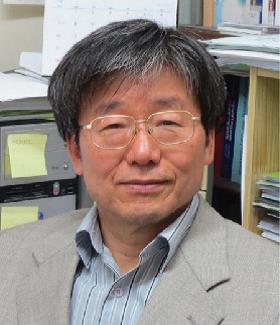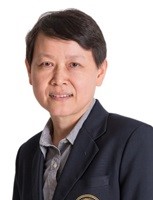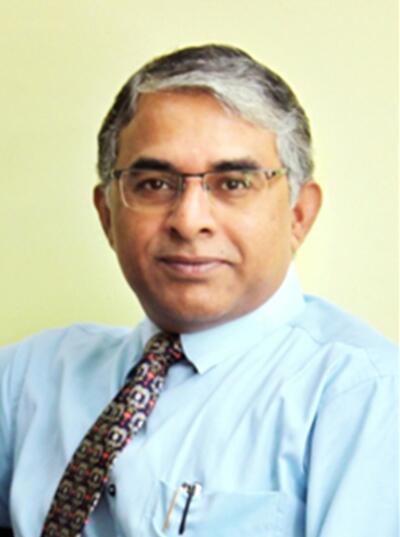Keynote Speakers
Prof. Jong-Whan Rhim
Kyung Hee University, Korea
Biography: Prof. Rhim
received his
Ph.D. in food engineering from Dept. of Food
Science, North Carolina State University,
Raleigh, NC, USA in 1988. He got his
M.Sc. in food engineering from Dept. of
Biological Engineering, Korea Advanced
Institute of Science and Technology, Seoul,
Korea in 1980 and
B.Sc. in food engineering from Dept. of Food
Engineering, YonSei University, Seoul,
Korea in1977. He is now a
Professor working at the Dept. of Food and
Nutrition, Kyung Hee University, Korea since
2017. Before that, he was a
Professor at the Dept. of Food Engineering, Mokpo
National University, Korea. He used to work
as
Head of Dept. of Food Engineering, Mokpo
National University, Korea, and
Visiting scholar at School of Packaging,
Michigan State University, East Lansing, MI,
USA and Dept. of Biological Systems
Engineering, University of Nebraska,
Lincoln, NE, USA. He was the head of Food Packaging Lab, R & D Center,
Miwon Co. Ltd., Seoul, Korea and a research
scientist in the Food Chemistry Lab, Korea
Institute of Science and Technology, Seoul,
Korea. He established a Food Packaging Laboratory
(including equipment worth over $2.0 million
for the Food Packaging and Food Engineering
Lab) from “ground zero” at Kyung Hee
University. He has over 30 years of continuous research support
totaling over $ 4 million in competitive
grants from governments and university, as
well as from industry. He graduated 7 M.S. and 4 Ph.D. students in the
Food Packaging and Food Engineering fields.
And he has over 240 scientific publications, five book
chapters, and five patents. He was also
invited to give short courses/seminars to
scientists for a number of major food
packaging and food engineering
organizations and serve in a number of leadership and program
chair positions in food packaging
science-related national and international
organizations. He was a
Highly Cited Researcher (2016, 2017, 2018,
Clarivate Analytics).
Speech Title: Multifunctional Biopolymer-Based Nanocomposite Films for Food Packaging Applications
Abstract: Concerns about environmental pollution caused by non-biodegradable petrochemical-based plastic packaging materials and consumer demand for high quality food products have increased interest in developing biodegradable packaging materials that use annually renewable natural biopolymers such as polysaccharides and proteins. However, the inherent disadvantages of natural polymer-based packaging materials, such as low mechanical properties and somewhat hydrophilic properties, are leading to major limitations for their industrial applications. One of the ways to solve the problem of bio-polymeric films is to develop nanocomposite films by combining nano-sized fillers such as nanoclays, nanometals or metal oxides, and organic fillers like cellulose or chitin nanocrystals. Polymer nanocomposites have significantly improved packaging properties due to nanometer-sized dispersion. These improvements include increased mechanical strength, reduced gas permeability, and increased water resistance. In addition, some nanoparticles-incorporated bio-nanocomposite films exhibit additional functional properties such as antimicrobial, antioxidant, and UV-light barrier properties. As a result, natural bio-polymer-based nanocomposite packaging materials with bio-functional properties have great potential for active food packaging applications.
Assoc. Prof. Dr. Apiradee Uthairatanakij
King Mongkut’s University of Technology Thonburi (KMUTT) , Thailand
Biography: Assoc.
Prof. Dr. Apiradee Uthairatanakij received
his B.Sc. and M.Sc. degrees in horticulture
from Kasetsart University, Thailand. She got
her Ph.D degree in postharvest technology
from University of Western Sydney,
Australia. She is now with the Division of
Postharvest Technology, King Mongkut’s
University of Technology Thonburi (KMUTT) ,
Thailand. Her curret research areas include
Pre and Postharvest of fresh produces and
agricultural processing. The areas of her
research group relate to postharvest
physiology of fresh produces especially
mangosteen and mangoes and also organic
vegetables. In addition, her group develops
the protocol of some tropical fruits such as
gamma irradiated mango and mangosteen
fruits. Using LED lights in plant factory to
enhance bioactive compounds in various
vegetables have also been study.
Speech Title: Gamma Irradiation as Postharvest Treatment of Fresh Fruits
Abstract: Ionizing radiation modifies the electronic structure of atoms of the food products and causes structural, biochemical and physiological changes. The FDA approved food irradiation in USA since 1986 and restricts the maximum irradiation dose level to 1 kGy for disinfestation and delayed maturation in fresh fruits. Gamma irradiation is a versatile technique of food preservation. It fulfils with disinfestation, inhibit sprouting, reduce microorganism and extend shelf life. APHIS regulations make provision for the application of generic doses of 400 Gy for all insects except for Lepidoptera pupa and adults, resulting in preclearance export programs for five countries including Thailand, India, Vietnam, Pakistan and Mexico. Exports under the APHIS program for generic doses started in 2007. Since then, Thailand has authorization from APHIS to ship irradiated mangosteen, longan, rambutan, mangoes, litchi, dragon fruit and pineapple to the US. However, the effect depends on the irradiation dose, maturity of fruit and fruit cultivar. Thus, the effect of gamma irradiation on physical appearance, physico-chemical attributes and losses of fresh fruits will be discussed.

Prof. Shane Snyder
Nanyang Technological University, Singapore
Biography: Dr.
Shane Snyder is a Professor of Civil &
Environmental Engineering and is the
Executive Director of the Nanyang
Environment & Water Research Institute
(NEWRI) at Nanyang Technological University
(NTU) in Singapore. He joined NTU after
serving as a Professor of Chemical &
Environmental Engineering and the
co-Director of the Water & Energy
Sustainable Technology (WEST) Center at the
University of Arizona, USA. For over 20
years, Dr. Snyder’s research has focused on
the identification, fate, and health
relevance of emerging water pollutants. Dr.
Snyder and his teams have published over 200
manuscripts and book chapters on emerging
contaminant analysis, treatment, and
toxicology (h-index = 68 with over 18,000
citations as of February 2018). He currently
serves as an editor-in-chief for the
international journal Chemosphere. Dr.
Snyder has been invited to brief the
Congress of the United States on three
occasions on emerging issues in water
quality. He is a Fellow of the International
Water Association and a member of the World
Health Organization’s Drinking Water
Advisory Panel. He has served on several US
EPA expert panels and is currently a member
of the EPA’s Science Advisory Board drinking
water committee and the US EPA’s Board of
Scientific Counselors Sustainable Water
committee. He was a member of the US
National Academy of Science’s National
Research Council Committee on Water Reuse
and currently serves on the WHO’s guiding
committee on development of potable reuse
guidelines. Dr. Snyder has also worked as a
Visiting Professor at the National
University of Singapore (2011-2017).
Speech Title: Sustainability in World’s Fastest Growing Regions: Challenges and Opportunities for Water and Waste Management
Abstract: Clean and reliable water is critical for sustainable economic development and for protecting human and ecological health. Water is also highly susceptible to impacts of climate change and environmental pollution. Rapid urbanization is taxing natural resources, including water supplies. Before the industrial revolution, cities housed less than 10% of human population. Today, approximately 50% of the world’s population lives in cities, with half of these cities having populations greater than one million people. By 2050, an addition 2.5 billion people are expected to live in cities. Cities produce nearly 70% of greenhouse gas emissions and have a commensure amount of energy consumption. At the same time, highly urbanized areas are increasingly struggling with management of waste generated within these densely populated regions. For instance, synthetic chemicals were not part of the human experience until the late 19th century with the accidental discovery of the synthetic dye, mauve. At current, more than 65 million chemicals are commercially available, many of which enter the environment both knowingly and unknowingly. From a drinking water exposure standpoint, not only are the chemicals themselves a potential risk, but also the innumerable transformation products formed during water treatment processes. From a solid-waste perspective, beyond discrete chemicals, many polymeric materials are designed to be resilient, inexpensive, and inert; however, these same properties have lead to vast pollution of the worlds oceans and lands. Fortunately, technological advances in water purification, waste treatment, and analytical characterization are providing sustainable solutions for protecting the public health and the environment. This presentation will discuss the history and evolution of water and waste treatment technologies with a view for the future opportunities for global sustainability.
Prof. Chettiyappan Visvanathan
Asian Institute of Technology, Thailand
Biography: Dr. C. Visvanathan is a Professor of the Environmental Engineering and Management Program, School of Environment, Resources and Development, Asian Institute of Technology. He has a Ph.D. (Chemical /Environmental Engineering) from Institute National Polytechnique, Toulouse, France. His main areas of research interests include: Cleaner Production and Industrial Environmental Management, Membrane technologies for water and wastewater treatment and solid waste disposal and management. In the field of solid waste, his main research interests focus around waste recycling and reuse, landfill pre-treatment technologies, plus methane oxidation and green house gas emission related to land fill design. He has published more than 150 international journal papers. He has more than 30 years of experiences teaching environmental engineering and management related courses at graduate level at AIT. His professional experiences include: Project Engineer, Asia Division, International Training Center for Water Resources Management, Sophia Antipolis, France, and short term consultant to UNEP Industry and Environment Office, Paris, France. Currently he is coordinating the ADB – AIT – UNEP joint project on 3R – Knowledge Hub from the AIT side.
Speech Title: Management of Agricultural Wastes and Residues in Thailand: Wastes to Energy Approach
Abstract: Agricultural sector in Thailand has played a significant role in economic contribution since historical times. Among the total area of 520 million square kilometers, more than 65% is occupied by agriculture related activities. With the ever increasing market demand for agricultural products, most of the agricultural residues often end up in the municipal waste streams or in some cases, not efficiently used. Since 2001, Thailand energy demand has been increasing at about 4% per year. A large portion of the fossil fuels is imported to meet the industrial and domestic needs, thus causing concern for energy security. In addition, utilization of fossil fuels is associated with green house gas emissions with significant environmental impacts. This presentation describes in a way, an acceptable approach of utilizing agricultural waste and residues as a potential source for an alternative and more sustainable energy resource with respect to Thailand. It also explains the energy potential from agricultural residues and animal manures that could be exploited to reduce the dependency on fossil fuels. The presentation also examines the prevailing methods and technologies employed in utilizing the agricultural biomass from the major crop products and animal manures with some case studies.


